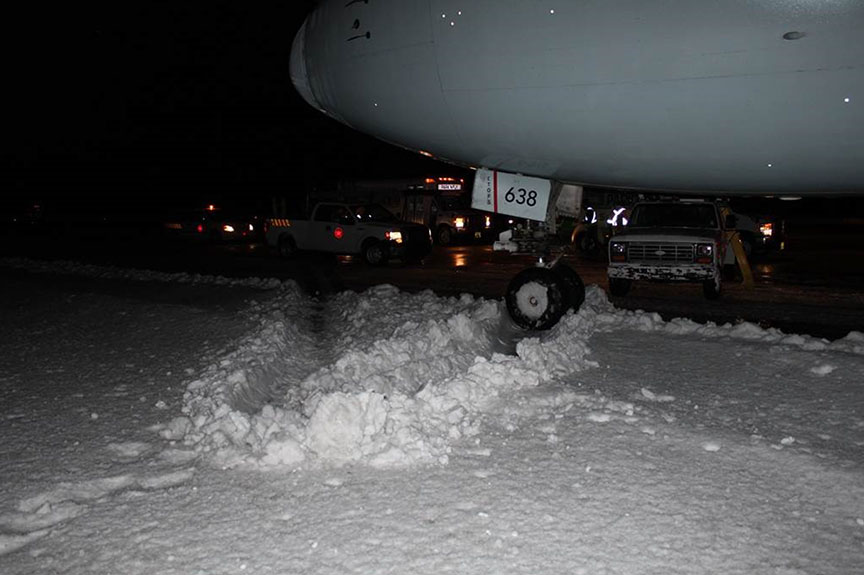Loss of Control during rollout
Air Canada
Boeing 767-375, C-FTCA
Halifax/Stanfield International Airport, Nova Scotia
The occurrence
On , a Boeing 767-300 series aircraft operated by Air Canada was conducting a flight from Toronto’s Lester B. Person International Airport, Ontario, to Halifax’s Stanfield International Airport, Nova Scotia. After landing, the wind pushed the aircraft as it was travelling over a slippery section of the runway, causing the nose wheel to enter a snow ridge on the edge of the runway. The 8 crew and 211 passengers were taken to the terminal by bus and the aircraft was towed to the apron for retrieval of luggage. There was no damage to the aircraft, and no injuries reported by the passengers or crew.
Media materials
News release
Investigation report: March 2019 loss of control during rollout at Halifax/Stanfield International Airport, Nova Scotia
Read the news release
Deployment notice
TSB deploys a team of investigators to a landing incident at Halifax Stanfield International Airport, Nova Scotia
Dartmouth, Nova Scotia, 4 March 2019 - The Transportation Safety Board of Canada (TSB) is deploying a team of investigators to Halifax Stanfield International Airport, Nova Scotia, following a landing incident involving an Air Canada Boeing 767. The TSB will gather information and assess the occurrence.
Investigation information
Download high-resolution photos from the TSB Flickr page.
Class of investigation
This is a class 4 investigation. These investigations are limited in scope, and while the final reports may contain limited analysis, they do not contain findings or recommendations. Class 4 investigations are generally completed within 220 days. For more information, see the Policy on Occurrence Classification.
TSB investigation process
There are 3 phases to a TSB investigation
- Field phase: a team of investigators examines the occurrence site and wreckage, interviews witnesses and collects pertinent information.
- Examination and analysis phase: the TSB reviews pertinent records, tests components of the wreckage in the lab, determines the sequence of events and identifies safety deficiencies. When safety deficiencies are suspected or confirmed, the TSB advises the appropriate authority without waiting until publication of the final report.
- Report phase: a confidential draft report is approved by the Board and sent to persons and corporations who are directly concerned by the report. They then have the opportunity to dispute or correct information they believe to be incorrect. The Board considers all representations before approving the final report, which is subsequently released to the public.
For more information, see our Investigation process page.
The TSB is an independent agency that investigates air, marine, pipeline, and rail transportation occurrences. Its sole aim is the advancement of transportation safety. It is not the function of the Board to assign fault or determine civil or criminal liability.
